Red barrenwort Epimedium × rubrum

ABOUT
The plant known as Red Barrenwort is a charming perennial that features a blend of attractive foliage and beautiful flowers. It has heart-shaped leaves that are a deep green in color, often with a hint of red, especially as they emerge in spring. As the seasons change, the foliage may take on redder overtones, adding to the visual interest of the plant through the growing season. The flowers of Red Barrenwort are small yet quite distinctive, typically composed of four spurs that give them a spider-like appearance. They are a striking blend of red and pink, creating a delightful contrast against the darker leaves. These blooms tend to appear in clusters, creating a soft, airy look above the foliage in spring and early summer. Red Barrenwort is often praised for its ground-covering abilities, as it gradually forms a dense mat that can help suppress weeds. This plant is a favorite for shaded gardens or woodland settings, where its delicate blooms can add a touch of whimsy and color even in lower light conditions.
About this plant
 Names
NamesFamily
Berberidaceae.
Synonyms
Red Barrenwort, Bishop's Hat, Fairy Wings, Horny Goat Weed.
Common names
Epimedium alpinum var. rubrum, Epimedium grandiflorum var. thunbergianum.
 Toxicity
ToxicityTo humans
Red barrenwort is generally considered non-toxic to humans. There are no well-documented reports of toxicity from consuming any parts of this plant. However, as with any plant, it is possible for individuals to have allergic reactions or sensitivities, so it is always prudent to be cautious when handling or ingesting plants that are not typically used for food.
To pets
Red barrenwort is not known to be toxic to pets. There are no significant reports of poisoning in pets such as dogs and cats from ingesting this plant. As with humans, individual pets may have different sensitivities, but red barrenwort is generally considered safe with no known toxic effects.
 Characteristics
CharacteristicsLife cycle
Perennials
Foliage type
Deciduous
Color of leaves
Mixed
Flower color
Red
Height
1-1.5 feet (30-45 cm)
Spread
1-2 feet (30-60 cm)
Plant type
Herb
Hardiness zones
5
Native area
China
Benefits
 General Benefits
General Benefits- Ground Cover: Epimedium × rubrum, commonly known as Red Barrenwort, is an effective ground cover that can fill in areas under trees and shrubs, reducing soil erosion and suppressing weed growth due to its dense foliage.
- Drought Tolerance: Once established, Red Barrenwort is known for its drought tolerance, making it a suitable plant for gardens in drier climates or areas with water usage restrictions.
- Shade Tolerance: It thrives in partial to full shade conditions, making it an ideal plant for garden spots that receive little direct sunlight.
- Low Maintenance: Red Barrenwort requires minimal care beyond initial establishment, which is ideal for gardeners looking for plants that do not require constant attention.
- Seasonal Interest: With its attractive heart-shaped leaves and delicate flowers that bloom in spring, Red Barrenwort adds visual interest to the garden across multiple seasons.
- Wildlife Attraction: The plant can attract pollinators like bees to the garden when in bloom, which can help pollinate other plants.
- Deer Resistance: Red Barrenwort is often resistant to deer, which makes it a good choice for gardens in areas where deer browsing can be a problem for other plants.
 Medical Properties
Medical Properties- Libido enhancement: Traditionally used in Chinese medicine to improve sexual function and increase libido.
- Osteoporosis treatment: Components such as icariin are believed to have potential in promoting bone health and may be used in the treatment of osteoporosis.
- Anti-inflammatory effects: Some studies suggest that Epimedium has anti-inflammatory properties, which may aid in reducing inflammation in the body.
- Erectile dysfunction: Icariin, a compound found in Epimedium, may help with improving erectile function by increasing blood flow.
- Immune system modulation: Epimedium may have an effect on immune system regulation, although specific mechanisms are not well understood.
 Air-purifying Qualities
Air-purifying QualitiesThis plant is not specifically known for air purifying qualities.
 Other Uses
Other Uses- Epimedium × rubrum, commonly known as Red Barrenwort, can be used as a ground cover in shady areas due to its dense foliage.
- Its leaves may be used in floral arrangements for their interesting shape and texture, adding a unique touch to bouquets.
- Red Barrenwort can serve as a natural erosion control agent on slopes or banks, thanks to its spreading habit.
- The aesthetically pleasing foliage of Red Barrenwort allows it to be a choice plant for themed gardens, such as fairy or woodland gardens.
- In regions where deer and rabbit browsing is a problem, Red Barrenwort can be a valuable deer and rabbit resistant plant.
- The plant's vibrant spring flowers can provide an early nectar source for bees and other pollinators waking from hibernation.
- The contrasting colors of its leaves in fall make Red Barrenwort useful for seasonal gardens that emphasize autumnal hues.
- Landscape designers may use Red Barrenwort for creating 'living edges' to soften the lines between hardscapes and lawn areas.
- Due to the plant's tolerance of low light, it can be used to underplant taller shrubs or trees that create significant shade.
- Some gardeners appreciate Red Barrenwort for its potential use in 'no-mow' landscapes, reducing lawn maintenance requirements.
Interesting Facts
 Feng Shui
Feng ShuiThe Red Barrenwort is not used in Feng Shui practice.
 Zodiac Sign Compitability
Zodiac Sign CompitabilityThe Red Barrenwort is not used in astrology practice.
 Plant Symbolism
Plant Symbolism- Love Enhancement - Epimedium × rubrum, commonly known as Red Barrenwort, is often associated with love and is sometimes used in traditional practices to enhance romantic or sexual feelings due to its purported aphrodisiac properties.
- Vitality and Life Force - The plant is believed to symbolize vitality because it is often used in herbal medicine to boost energy and combat fatigue, suggesting the idea of renewing one's life force.
- Longevity - Due to its medicinal properties that are thought to support health and well-being, Red Barrenwort is also sometimes seen as a symbol of long life and endurance.
- Fertility - The use of Red Barrenwort in traditional medicine for reproductive health has led to its association with fertility and reproductive vigor.
 Water
WaterRed barrenwort prefers consistently moist soil, particularly in the spring and summer during its active growth phases. Watering should occur when the top inch of soil feels dry to the touch, which typically might be about once a week. The frequency of watering may reduce during the fall and winter when the plant's growth slows down. It's important to water the plant with care, directly at the soil level, to avoid wetting the foliage. Aim to provide the red barrenwort with approximately one gallon of water every week during the growing season, adjusting as necessary for rainfall and temperature conditions.
 Light
LightRed barrenwort thrives in partial to full shade, making it an excellent choice for understory plantings or shaded garden areas. The best spot for this plant is one that receives filtered sunlight or dappled shade, as too much direct sun can scorch the leaves. It can tolerate some morning sunlight, but it should be protected from the intense afternoon sun to maintain its vibrant foliage and delicate flowers.
 Temperature
TemperatureRed barrenwort is hardy and can withstand a range of temperatures. The plant can survive in temperatures as low as 5°F and as high as 85°F, although it performs best in moderate temperatures between 50°F and 75°F. The ideal condition is a cool climate, as red barrenwort is accustomed to the understory environment of wooded areas where the temperature remains relatively stable.
 Pruning
PruningPruning red barrenwort is necessary to remove dead or damaged foliage and to promote denser growth. The best time to prune is in late winter or early spring before new growth begins. Pruning can be done annually, cutting back the old foliage to the ground. This practice ensures that the plant will display fresh, new leaves and flowers in the spring.
 Cleaning
CleaningAs needed
 Soil
SoilEpimedium × rubrum, commonly known as Red Barrenwort, thrives best in a moist, well-draining soil mix with high organic matter content. The ideal pH range for the soil is slightly acidic to neutral (pH 5.5 to 7.0). A good mix might include equal parts of garden soil, compost, and bark or leaf mold to ensure fertility and proper drainage.
 Repotting
RepottingRed Barrenwort is a slow-growing plant and does not require frequent repotting. It is generally sufficient to repot a Red Barrenwort once every 3 to 5 years. When repotting, gently loosen the roots and give the plant a slightly larger pot if it has outgrown its current one.
 Humidity & Misting
Humidity & MistingRed Barrenwort prefers average to high humidity levels. Aiming for a humidity level between 40% and 60% tends to be ideal for this plant's growth and health, although it can tolerate lower humidity levels with proper soil moisture.
 Suitable locations
Suitable locationsIndoor
Place Red Barrenwort in bright, indirect light and maintain moist soil.
Outdoor
Plant in partial shade, water regularly, and protect from harsh sun.
Hardiness zone
5-9 USDA
 Life cycle
Life cycleEpimedium × rubrum, commonly known as Red Barrenwort, begins its life cycle with seed germination, which typically requires a period of moist, cool conditions to break seed dormancy. Following germination, seedlings emerge and develop a root system and foliage, initially forming a basal rosette. As the plant grows, it enters a vegetative phase, producing distinctive heart-shaped leaves and establishing a clump-forming habit through rhizomatous growth. Sexual reproduction occurs in spring when Red Barrenwort produces small, colorful flowers on wiry stems above the foliage, which are pollinated by insects. After fertilization, seed capsules develop and eventually release seeds, allowing for dispersal and the start of a new cycle. Throughout its life, which can span multiple years, Epimedium × rubrum maintains a perennial habit, dying back in winter to dormant rhizomes before re-emerging in spring.
 Propogation
PropogationPropogation time
Spring to early summer
Propogation: The most popular method for propagating Epimedium × rubrum, commonly known as Red Barrenwort, is through division. The best time for this is in late fall or early spring when the plant is dormant. To propagate by division, carefully dig up the entire plant and gently separate the rhizomes or root ball into smaller sections, each with several growth points. These divisions can then be immediately replanted in well-draining soil, spaced about 12 to 15 inches (approximately 30 to 38 centimeters) apart to allow for growth. Water the new plantings thoroughly and maintain even moisture until the divisions are well-established.
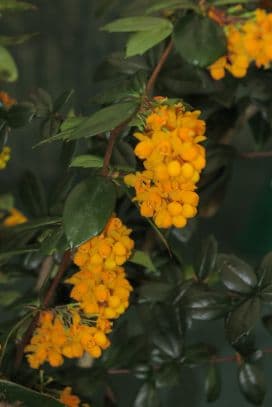
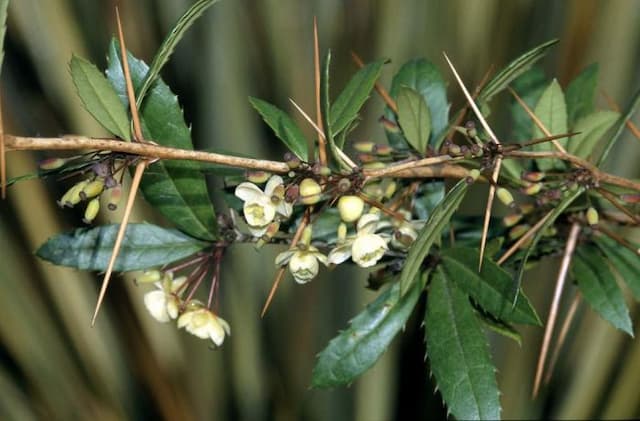
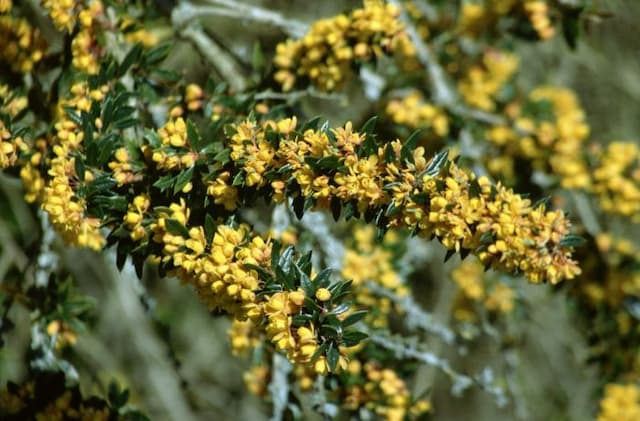
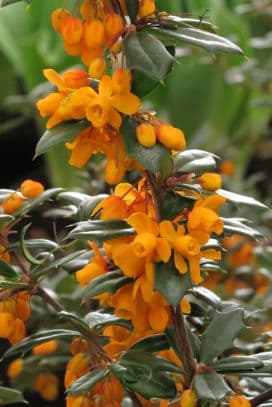
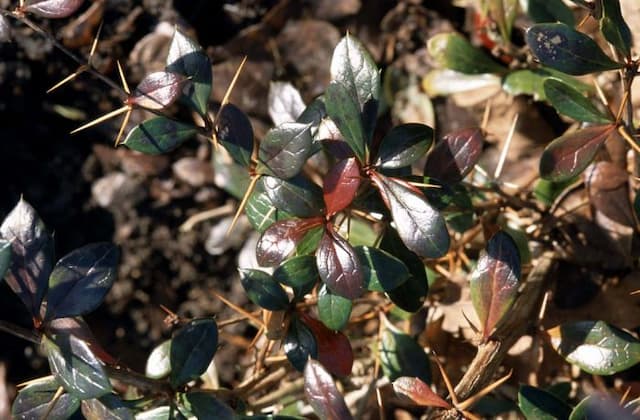


![Japanese barberry [Bonanza Gold]](/_next/image?url=https%3A%2F%2Fplants-admin.emdemapps.com%2Fimages%2Fplants%2F%2Fimages%2F604b5385e413f.png&w=640&q=75)

